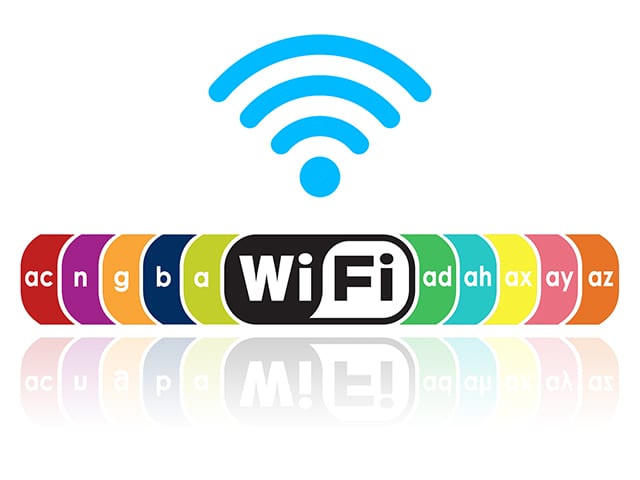When shopping around for wireless routers to set up a Wi-Fi connection, you realise a particular trend in the routers: some are marked ‘2.4 GHz’ while others are marked ‘5 GHz’. Then you ask yourself…..’Is there really a SIGNIFICANT difference?’ And technically, there is. Knowing the difference between a 2.4 GHz and a 5 GHz wireless network (Wi-Fi) will definitely help you to make the best decision on the kind of wireless network to set up at home, at a business or even in a condominium.
First of all, a Wi-Fi connection uses radio waves to connect your computers, mobiles, and other devices together. Radio waves are distinguished from each other by their frequencies; such as 1600 KHz radio waves used by AM radios and 108 MHz radio waves used by FM radios. Wi-Fi networks generally use two different frequencies: 2.4 GHz and 5 GHz. Each frequency provides its wireless network with an advantage over the other and we will look at the advantages and disadvantages of the two kinds of wireless networks.
Just remember than the term ‘bandwidth’ refers to the speed at which data is transferred over the wireless network (more bandwidth means faster downloading and uploading) and ‘range’refers to the maximum distance from the router at which the network can be received (the greater the range, the further you can be from the router and still be connected).
2.4 GHz Wireless Networks
Advantages
- It is cheaper to manufacture devices that use this frequency. As a result, this frequency has become standard and all Wi-Fi enabled devices can use this network.
- It has a much better range than a 5 GHz wireless network. This is due to the fact that the radio waves are able to penetrate solid objects (such as walls and floors) much better than the 5 GHz radio waves.
Disadvantages
- It has a lower bandwidth than the 5 GHz network.
- Devices such as cordless phones and microwaves use the same 2.4 GHz radio waves as a wireless router. If you have such devices at home, they can cause interference with the radio waves from the router, causing the network’s bandwidth to be reduced.
- More devices support this frequency so there is more congestion in this frequency which may cause issues with bandwidth
5 GHz Wireless Networks
Advantages
- It has a much higher bandwidth than the 2.4 GHz network.
- This network is not used by common wireless devices such as cordless phones; therefore, there will be no or very little interference to cause a reduction in bandwidth.
Disadvantages
- It is more expensive to manufacture devices that use this frequency, therefore, only few wireless devices can use this network.
- It has a much lower range than the 2.4 GHz wireless network. Being the higher frequency of the two, it is not able to penetrate solid objects as great as the 2.4 GHz radio waves.
- As this is a newer standard and more expensive to implement, fewer devices support this frequency
Do you want more information? Check out this site:
Now that we have analysed the pros and the cons for both the 2.4 GHz and the 5 GHz wireless networks, which wireless network do you think will be the best for you?
Are you in the market for an internet plan in Ontario? Check out our plans

Want to speak to a real person?
